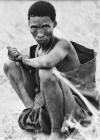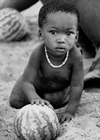|
|||||||||
Site Menu:
|
Testimonials These are some going-in-comments by key professional players in what was to become the Elephant Coast development. That is statements made before the expansion south was assured in the early 40,000 acre Peninsula-only scope days, before the world class MLSP paradigm for the major southern wildlife watching eco-tourism was adopted. That is when the project became 585,000 acres or 914 Sq Mi and the Learjet-set with wildlife refuge became the plan for the majority of the Peninsula. Before the Antique steam train concept had fully evolved, sheltered deep water access to a corridor across Inhaca had been added, and the sun-sea-beach and offshore dredged-sheet-pile island concept had evolved for the sheltered inner bay west of Inhaca and the Peninsula, with Club Med and Sandals like family holiday villages, the hotels and golf courses to the north on the Peninsula and on Inhaca Island, and many other enhancing concepts were added, as the world class CPD quality of the raw land became known and appreciated, calling for an exotic plan to fit. All of which contributed to keeping the whole development area native-and-unspoiled as per the UN mandates for the Maputaland Center of Plant Diversity under the 1992 Earth Summit International Biodiversity Accord—which status of the development's raw land was then yet to be known to exist. And not to forget the social engineering of taking in the local bush residents in as preferred income stock holders (The CAMPFIRE-Zimbabwe concept) uplifting their lifestyles with education facilities, medical facilities and plans to positively address the regional malaria-AIDS challenges, and much more. After publication of the book, there will be space here to feature updated testimonials as the development progresses and the occasion arises. Mahomed Rafique, was then (1995) Minister of Tourism the Mozambique Government Ministry sponsoring the development on the eve of the Elephant Coast development making its feasibility study expansion from being restricted to the Machangulo Peninsula-only (original Cape Santa Maria target-40,000 acres) to the expanded south version with a more wildlife-ecotourism approach (now 585,000 acres or 914 Sq Mi) development area and accompanying plan. His statement below was taken from a video clip being produced to introduce and promote the development for the approval of his Government (contributing the raw land) in partnership with international interested parties as co-developers. Mahomed stated in October 1995: “The expanded project fits the requirements of Mozambique as the right way to profit from the beauty now lying idle. It can be turned into something we can preserve for the future but at the same time make some revenue, a combination of preservation and money, development with conservation, conservation with development. The concept we have to preserve is what we have is not just for the Mozambicans but is to be shared with all of humanity. If humanity has the money to come, they will come. They are welcome, they pay for what they see and enjoy, they go back home. But they can come back again tomorrow as this belongs to them as well as to the entire humanity.” John Elliott, was UK Managing Director of Wimberly, Allison, Tong and Goo (WATG) of the Bechtel London development feasibility study team. WATG are top rung international architects and planers for exotic tourist and leisure developments worldwide. John’s videoed October 1995 statement: “I am John Elliott, Managing Director of Wimberly Allison Tong and Goo (WATG) London. We are an international company that specializes in hotels, tourism and entertainment and leisure projects. We are both architects and planners. In this case we are acting as the Master Planners for the development of the Santa Maria resort development in Mozambique. We are working virtually throughout the World with offices in Honolulu, Newport Beach, California, Singapore, and London, literally spanning the globe”. “I would like to say in all honesty that there are very few wonderful opportunities like the one we have seen here in Mozambique. It is truly a magnificent site. It is extremely unusual to have such a connection with the opportunity for wildlife and a beach resort.” Note: In this quote from John Elliott in October 1995 was before the scope of the project officially expanded from 40,000 acres, the Machangulo Peninsula-only to the Mozambique Government eventually awarded 585,000 acres (914 Sq Mi) a few months later. By which time the development had progressed from a beautiful raw site, but with questionable viability; transitioning to an extraordinary world class site with cash cow possibilities with the 'critical-mass' and 'economy-of-scale' to support the needed infrastructure, marrying African wildlife watching eco-tourism with the international craze for the same, for an altruistic, charitable, benevolent while cash cow project. Martin Gerty, Managing Director of Horwath UK, a leading international consultancy on worldwide tourism and leisure projects (Oct 1995), stated: “I am Martin Gerty, Managing Director of Horwath UK, a consultancy specializing in the tourism industry. Much of our work involves carrying out market and financial appraisals of new international tourism developments. Earlier this summer we were invited to become part of the team to advise the development of the Santa Maria Peninsula in Mozambique. Our role was to provide market and economic input in the formation of the development proposal—feasibility study. “Prior to talking about the Santa Maria development, I will put it in the context of international tourism globally. Tourism is a major growth industry. International tourism arrivals more than tripled from 1970 to 1994 when there were more than 532 million arrivals. Africa received only 3.5% of all tourism arrivals, however its share more than doubled from 1970 to 1994, arrivals increased sevenfold over the same period. Tourism to Africa has been held back by political and social unrest. However the future outlook is superb.” “Our market research indicates that the development of a resort combining international standard wildlife and beach facilities would be a unique selling point and would be successful in attracting international tourism. Our research also indicates there would be strong demand for other special interest tourism, particularly deep sea fishing and scuba diving. The resort is a long term development which has the potential to succeed. Its success will depend on involving and working closely with the local Government to overcome the current constraints on tourism to Mozambique and investment in the country.” |
||||||||
|
www.savemozambiqueselephantcoast.org © 2007
Home Page | Cause and Opportunity | History | Policies | Video Page | Faq's | Links | Contact Graphic Design by Local Tech Service |
|||||||||







